DEVASTATING HURRICANE VISITS WILLSHIRE VICINITY—That was the headline of the Friday, April 2, 1920 edition of The Willshire Herald. It was published less than a week after one of worst tornadoes swept through this part of the country.
Why do I have an interest in tornadoes? A while back my mom gave me some old photos. Among them were some showing the aftermath of wind damage and one of a barn being rebuilt. I suspected these photos may have been taken at the Schumm farm, east of Willshire, where my mom grew up. Her grandfather, Lewis J. Schumm, purchased the farm in 1878 and the farm has been in the family ever since. However, the barn roof has the date 1886 on the shingles. No one that I have talked to has ever heard that the barn was once destroyed and rebuilt. My mom only has knowledge that the orchard was destroyed by a tornado many years ago.
My research mission this time was to find out if a tornado had ever hit the Schumm farm. So, I headed off to the Brumback Library in Van Wert and to the Mercer County Public Library in Celina to look through some area newspapers on microfilm and see what I could learn about local tornadoes that occurred nearly 100 years ago. I have included a list of the newspapers I used as sources of information at the end of this blog.
Quite a few tornadoes have gone through this part of the country over the years. I remember the Palm Sunday Tornadoes in April 1965 as well as the tornadoes that struck Van Wert County in 2002. The Willshire area was also hit by a tornado in March of 1918.
But a group of even more destructive and deadly tornadoes struck the area on Sunday, March 28, 1920 at 7 o’clock in the evening. There was extensive wind damage near Chicago before the storm moved into Indiana and Ohio. The 1920 Van Wert Times referred to it as the worst tornado in the history of Van Wert. The storm followed a path similar to that of the 1918 tornado. Although the 1920 storm was not as wide across as the tornado two years before, it was more serious. It came from the southwest, crossed parts of Mercer County and went on into Van Wert and Auglaize Counties. Just about every township in Van Wert County, as well as portions of Mercer, Auglaize and Darke Counties were struck by the high winds. Also hard hit were Monroeville, Bryant, Geneva, Berne, and Zulu in Indiana.
DEVASTATING HURRICANE VISITS WILLSHIRE VICINITY—(The Willshire Herald, 2 April 1920, front page): The country to the southwest, south, southeast and east of Willshire was in the path of the hurricane that swept over portions of eight states Sunday afternoon and evening, leaving death and devastating ruin in its wake wherever it struck. Up to noon Thursday 326 fatalities had been reported from the various stricken districts, while the maimed is estimated at several thousand…Edgerton, a small town in Williams county, Ohio, near the Indiana state line, was practically wiped out of existence, as was the little hamlet of Zulu, a few miles west of the state line…the country surrounding Geneva and Berne was visited [and] several persons, relatives of Willshire people, were killed and injured. Fred Miller, a son of Mr. and Mrs. Dave Miller of this town, had both legs broken, and his wife was also painfully injured. Mrs. Simon Riffle, mother of Mrs. Fred Miller, was killed, as was her grandfather, George M. Ramseyer, aged 82. The entire Riffle family was more or less injured… Mr. and Mrs. Ralph Smitley and children were seriously hurt. Edward Anspaugh, also of the Berne district, whose back was broken, is a cousin of Mrs. W.A. Dull and Mrs. G.M. Clouse of this town. The dead in the Bryant district total nine, and the Geneva district three.
Tearing on east the hurricane struck the Willshire territory in the Milo Campbell-W.E. White neighborhood, spreading out from one-half to one mile in width…The Campbells were left without shelter…Will Evans had his house wrecked and barn demolished. The Duckcreek church was razed and the wreckage strewn over ten acres of ground. The M. Branstetter place was hard-hit, as were the G.W. Sapp, Perry Hoblet, Jesse Tickly, Frank Dudgeon, Elmer Stetler, Floyd Friedly and many others. Coursing northeast the hurricane struck the Ridge territory with terrific force. The Shell brick school house was leveled to the ground; Audie Stetler’s barn was demolished and several horses and a cow killed; the F.C. Myers and Mart Stamm, E.A. Acheson, Joe Doner, John Wright, Jesse Wheeler, Jesse Boyer and Wm. Buechner farm buildings were all badly damaged, and over in Liberty Township the big barn on the J.M. Dull farm was wrecked and his fine brick house damaged. Wm. Rader in Ridge Township was instantly killed and Mrs. Rader died while being taken to the hospital in Van Wert.
SWEPT BY TORNADO was the headline of the April 1, 1920 edition of The Rockford Press. This newspaper reported the damage in Mercer, Auglaize and Darke Counties in Ohio, as well as in Indiana.
Sweeping across many states, spreading devastation and taking its toll of human lives, the terrific windstorm struck this section early Sunday evening. While the wind blew a stiff gale all day, the sky was clear and the sun shone brightly and no one really suspected that a cyclone was on its way.
The storm in it greatest severity crossed Mercer County in two places, the northwest and southeast corners. In the northwest part the Duckcreek Church in Blackcreek Township seemed to be the first object on which the wind vented its fury; the structure was laid flat. And from this point northeasterly on into Willshire Township, Van Wert County, the wrecked homes and farm buildings, and other debris, plainly mark the storm’s path. No less than 25 farm homes were badly damaged and but few places escaped injury of some kind.
Mercer County was indeed fortunate there was no loss of human life. Many people had narrow escapes; some were blown out of their homes, yet landed safe. The loss of livestock is large. The animals being crushed under the falling structures, struck by flying timbers or dashed to death.
The large barn of Charles Schumm on the Willshire Road was badly twisted by the storm. Among the heavy losers from the cyclone in Blackcreek Township are Wm. Evans, Mike Branstetter, Wm. Hamrick, Milo Campbell, Oscar Krall, John McGough, Clarence Hoblet, Frank Dudgeon, and many others. All suffered the demolishing of houses or barns or both and had narrow escapes from injury. Nearly everyone lost livestock of some kind.
In the southeastern part of the county, the storm vented its greatest fury on Marion, Franklin and Granville Townships. The neighborhoods of St. Rosa, St. Johns, Maria Stein and Chickasaw being most severely affected…the Catholic Church at St. Rosa had a tower blown off…damage done here will touch at least 25 or 30 farms…
At Moulton, in Auglaize County, the new Lutheran Church, the Methodist and the United Brethren Churches were all blown down. Services were being held in the Lutheran Church when the storm came up and the pastor advised his congregation to go to the cellar, which saved many of his members from death. A department store and an elevator were wrecked…eight residences were demolished. The reported dead are Henry Lechner aged 16; the six year old son and a four year old daughter of John Kacheiries; and another child was missing. In Darke County there were eight dead and 30 injured.
In Jay County, Indiana, the little town of West Liberty was struck and only three houses left standing…The death list there includes Frank Smith, Mrs. Goldie Smith, Florence Smith, Clarence Smith, Mrs. Frank Haggot, Keith Haggott, David Kessler, Mable Fields, Katharine Fields, Katherine Gross.
The storm struck heavily east of Berne, Indiana, and damaged many houses and buildings. Monroeville, Indiana, was touched by the storm and in a district north of the town Mrs. William Simons and two children named Giant and Grodian were killed.
The damage reported in Willshire Township: Louis Schumm, barn down; William Buechner, barn destroyed and dwelling seriously damaged; Otto Stetler, barn destroyed and three dead horses; Robinson house and barn down; Jesse Boyer and Jesse Weiler, houses and barns badly wrecked; barns destroyed at Jacob Gunsett, Thomas Friedly, Maynard Stetler, Jesse Tickle, and Dudgeon farms. The George F. Robinson farm in Van Wert County occupied by Frank Wright was swept of its buildings. [This may be the Robinson farm mentioned above.] In all there were fourteen barns destroyed in Willshire Township. Blackcreek Township, Mercer County, also suffered severe losses.
The 1920 tornadoes were deadly. A day after the storm a resident near Convoy reported that Dr. Morgan of Dixon found seven dead between New Haven and Monroeville and that he and had not yet reached the worst part of the damage. Mr. & Mrs. William Rader were both killed. Darke County, hardest hit in Ohio, reported eight deaths. One family there lost the father and three children. Mercer County escaped without the loss of life. The Van Wert Daily Bulletin, Tuesday, March 30, 1920, reported that over 176 were killed in eight states: Illinois, 30; Georgia & Alabama, 75; Ohio, 32; Indiana, 28; Michigan, 9; Wisconsin, 1; Missouri, 1.
Others were seriously injured: Mrs. Fred Stephenson, two ribs and an arm broken, a scalp wound and badly bruised; Fred Stephenson, bad cut on the side of his face, scalp wound and bruises; Myron Stephenson, left leg broken below the knee, bruises; Mr. & Mrs. Martin Roth, scalp wounds and bruises.
A firsthand account from Mrs. Ora Schaffer, who lived a short distance north of the Ridge Township House: “This didn’t seem to be a tornado like the one two years ago. It was simply a terrific wind which seemed to come from all directions. It had been raining hard and then the hail started. The house started to shake. I said to my husband, ’We’d better get to the cellar.’ We grabbed the children and got half way down the cellar when the cellar windows were blown out and the house went entirely off its foundation.” (The Van Wert Times, Monday March 29, 1920)
It was reported that a piano belonging to the Leplys, east of Van Wert, was picked up [by the wind or just picked up? not sure] and put on a pile of wreckage. (The Van Wert Times, Monday March 29, 1920) It was also reported that the tornado, almost a mile wide, moved a house several feet on its foundation.
The 1 April 1920 edition of the Van Wert Twice Weekly Bulletin estimated the loss of property from the storm in Van Wert County at $2 million. The paper also reported that many residents discovered too late that they were not covered by insurance. Apparently during the month preceding the storm some families neglected to transfer their insurance policies after they had transferred ownership of farm lands. They were not insured, according to insurance company rules.
The good people of Van Wert County chipped in to help their neighbors. Reconstruction work was started in all parts of the county Sunday night after the storm and yesterday and today hundreds of men and boys are at work. The entire county is uniting in helping the sufferers. The schools, county officials, Red Cross, the Farm Bureau, churches and other organizations are co-operating. Temporary shelters are being constructed, fences are being built to keep in cattle, repairs are being made to damaged buildings and debris is being collected. (Van Wert Times, 30 March 1920, front page)
The 1920 tornado is also mentioned in the history of Duckcreek Church, Mercer County: Late in the evening of March 28, 1920, just after dark, the church was completely blown apart by a cyclone. It destroyed the church building and turned over or broke cemetery stones, but the church bell came straight down and was later moved and used in the Mount Hope Church, four miles to the west.
The Willshire Herald was the only area newspaper that referred to this storm as a hurricane. Did we really have a hurricane here in landlocked west central Ohio? According to Dictionary.com, today’s definition of a hurricane is 1. A violent, tropical, cyclonic storm of the western North Atlantic, having wind speeds of or in excess of 72 mph. 2. A storm of the most intense severity. 3. Anything suggesting a violent storm. Webster’s Dictionary, copyright 1943, defines a hurricane as A gale of extreme violence characterized by fitful changes of the wind and, sometimes, thunder and lightning. According to those definitions, you could call the storm that hit the area in 1920 a violent hurricane.
I still don’t have the answer to my original question. The newspaper article said the Louis Schumm barn was destroyed by a tornado but no family members remember Louis or Cornelius talking about a tornado that destroyed their barn. The barn’s slate shingles appear to be the original 1886 shingles. Louis Schumm’s barn was a banked barn but the barn being built in the photos was not a banked barn.
Perhaps Louis lost a small barn-type building and the newspaper exaggerated. And perhaps these were photos of a neighbor’s tornado damage and someone else’s barn being rebuilt. I may never know for sure.
These newspaper articles also give me ideas for future research. I can research the March 1918 Van Wert County tornadoes. One of the articles mentioned that a cyclone struck Mercer County in May 1884, causing the loss of several lives and much destruction in Liberty and Hopewell Townships. Even more research opportunities…
Newspaper sources for this blog: Willshire Herald, 2 April 1920; The Van Wert Daily Bulletin, 30 March 1920; The Van Wert Times, 29 March 1920 and 30 March 1920; Van Wert Times Bulletin, 29 March 1920; Van Wert Twice Weekly Bulletin, 30 March 1920 and 1 April 1920; and The Rockford Press, 2 April 1920.

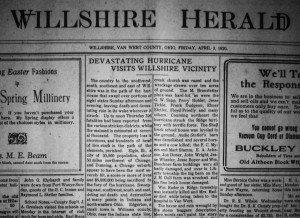
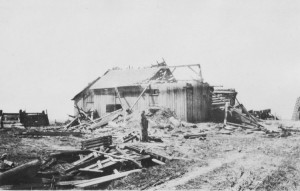
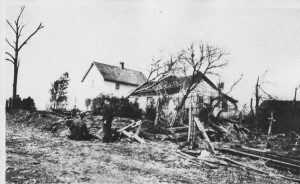
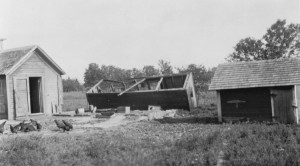
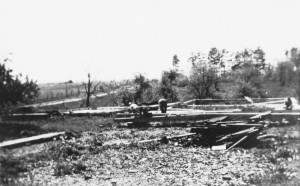
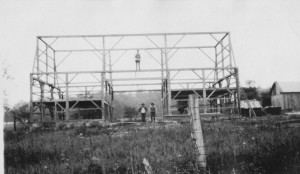
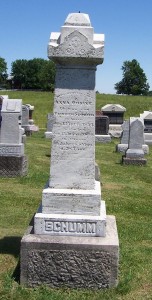
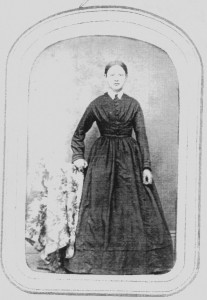

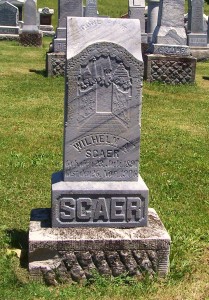
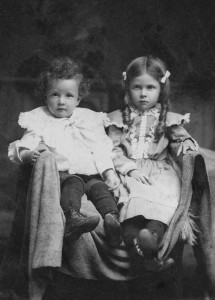
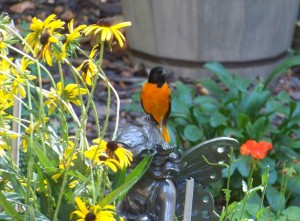





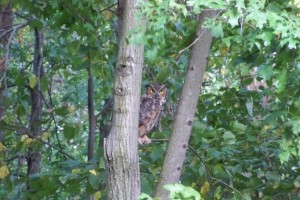
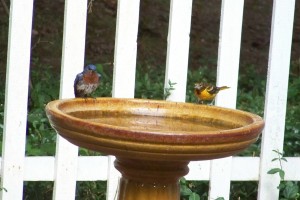
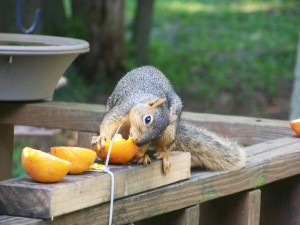
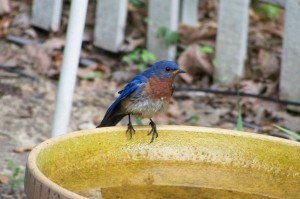

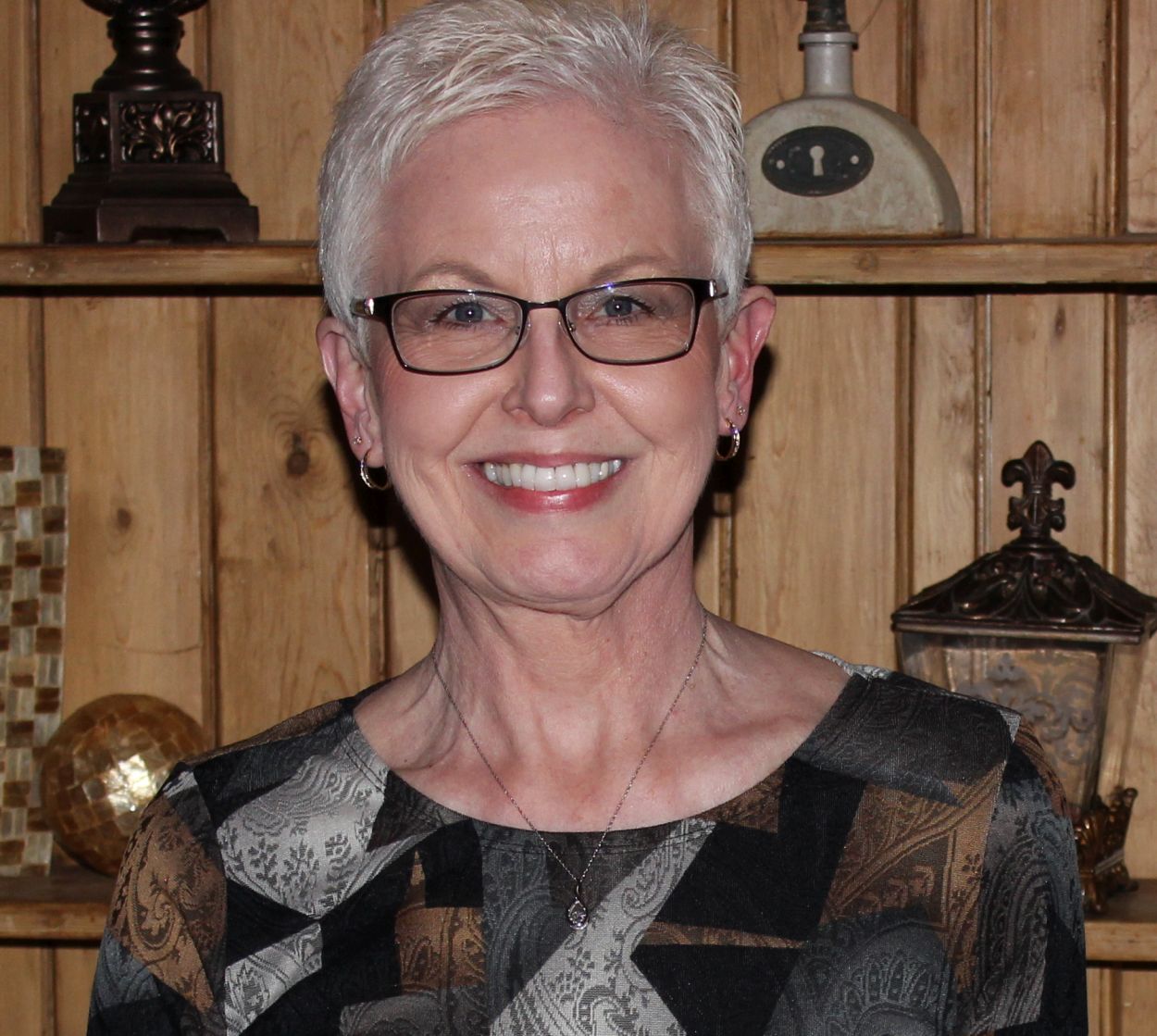
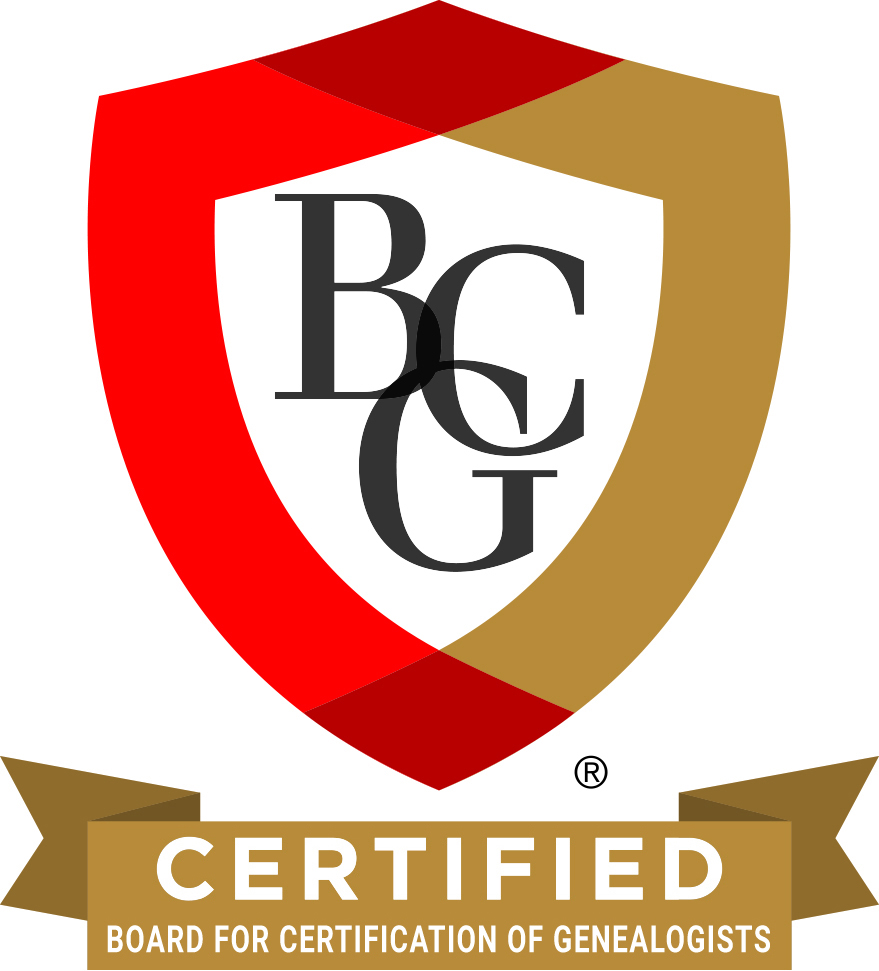


You are welcome!
You're welcome, Karen. I'm still working on this also. Thank you so much for all of your wonderful Mercer County…
Very interesting and great picture (I had neersee before) of the church! Thanks for sharing this, Karen.
Ha! I see why you say that. Your original surname was probably something similar to Schmitt.
Thank you for letting me know.